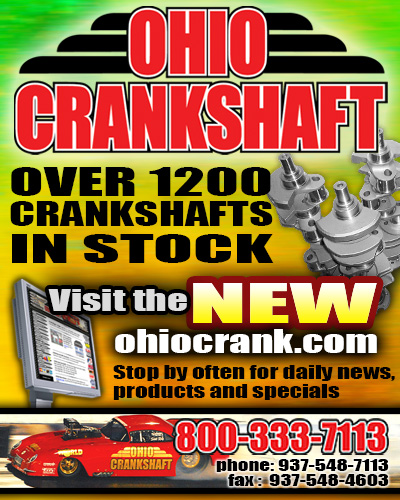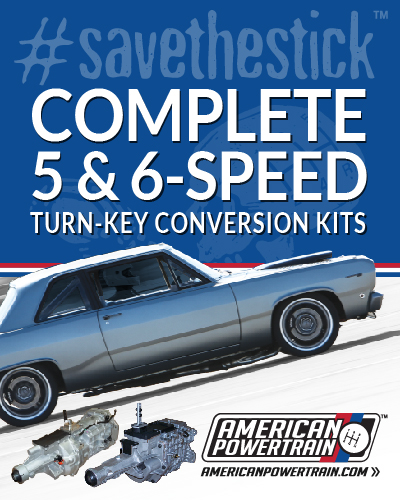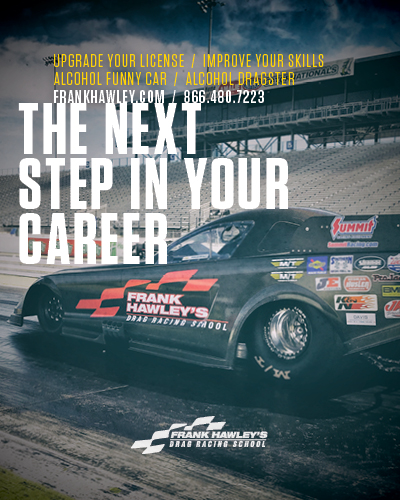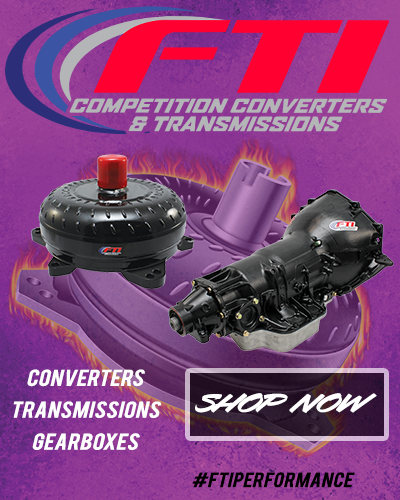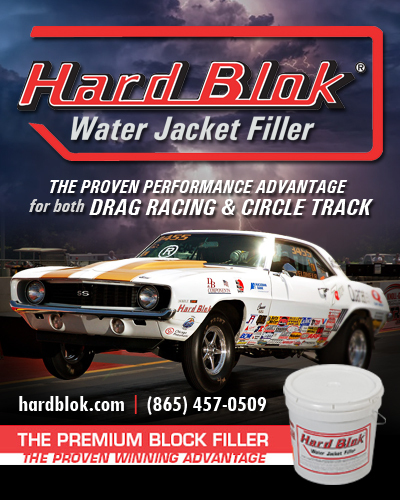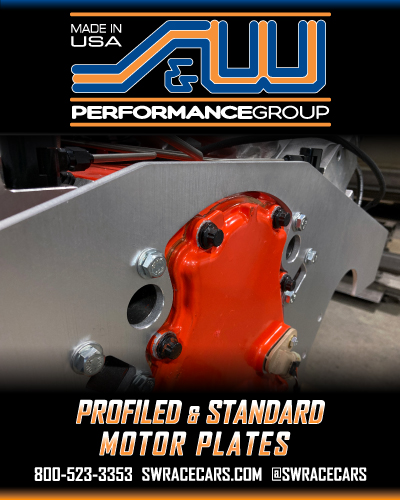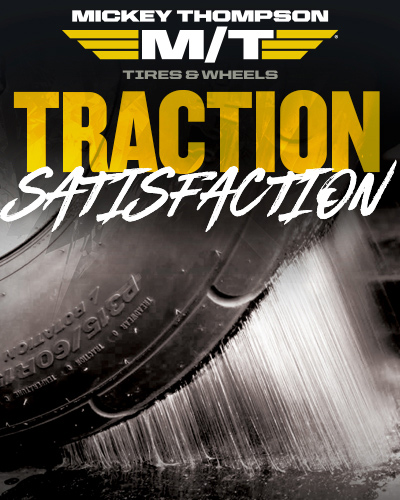ENCORE - REMEMBERING THE WAYNE COUNTY OPEL
Originally published January 2007
Could this be one of the most successful sportsman cars?
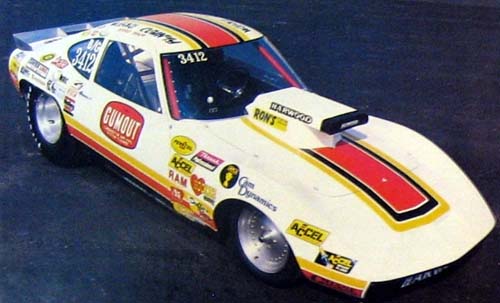
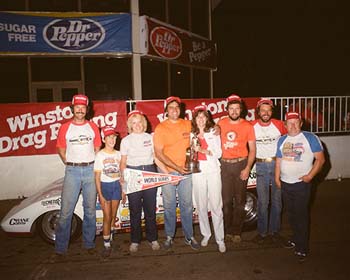 In a never-ending search for the proverbial “unfair advantage,” racers have chased speed secrets since the sport began. No matter how well they’re running, everyone knows a trick engine combination, aerodynamic advance, soft weight break, or even a simple loophole in the rules can keep them a step ahead of the rest.
In a never-ending search for the proverbial “unfair advantage,” racers have chased speed secrets since the sport began. No matter how well they’re running, everyone knows a trick engine combination, aerodynamic advance, soft weight break, or even a simple loophole in the rules can keep them a step ahead of the rest.
If ever there was a case of applying those principles and succeeding, the Opel GT campaigned by the Wayne County Speed Shop in the late 1970s and early ‘80s fits the bill. The car’s existence and success is a classic case of looking at the rules for a given class and building a better drag racing mousetrap for it.
“We were probably the first people to look at the class and say, ‘If you built the right car, you could beat a lot of people,’” Wayne County’s Mike Sullivan said.
The result was a Modified and Competition Eliminator standard-bearer that delivered 11 NHRA national event wins, a class championship, and numerous divisional meets into the hands of Dave Hutchens, the late Larry Kopp, and Todd Patterson between 1979 and 1987. This at a time when those eliminators featured heavy hitters like Cotton Perry, Garley Daniels, Terry Hoard, Coonce and Clark, Paul Mercure, Danny Townsend, and many more.
Sullivan, who built the team’s cars, didn’t necessarily have to go a different route to rise to the top. The ’23 Ford B/Street Roadster he and driver/engine builder Dave Hutchens were running at the time was already a national event winner in Modified.
Feeling the roadster had reached its performance peak, Sullivan turned his eye toward B/Gas, which at the time was dominated by a variety of Chevrolets equipped with 331-inch engines. Sullivan and Hutchens ran a 278-inch motor in the roadster and saw weighty
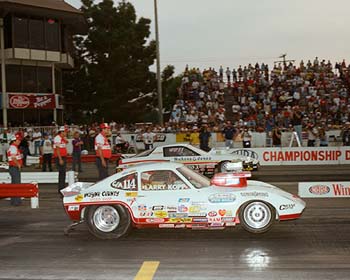 “That street roadster was about as aerodynamic as a shoebox,” Sullivan said from his home in Fairfield, Ill. “We did things to make it better, but it was a brick wall. In B/Gas everyone in the class was running 331 Chevy engines. With the 278-inch motor we had, at 6.5 pounds (per cubic inch, the class weight break), our goal (building the car) was 1,800 pounds with driver.”
“That street roadster was about as aerodynamic as a shoebox,” Sullivan said from his home in Fairfield, Ill. “We did things to make it better, but it was a brick wall. In B/Gas everyone in the class was running 331 Chevy engines. With the 278-inch motor we had, at 6.5 pounds (per cubic inch, the class weight break), our goal (building the car) was 1,800 pounds with driver.”
Both Sullivan and Hutchens said the smaller motor gave them more of an advantage than just a massive weight loss. They said it was more efficient than the big blocks.
“Nobody ever really built a car light enough to take advantage of the small-cubic inch motors, where you can get all the cylinder head on them,” Hutchens said, also from his Fairfield home. “You get more horsepower per cubic inch.”
As for the choice of body, Sullivan said he’d seen a few Opel GTs running here and there – Bob Panella, Frank Mazi, and Junior Thompson were among those who ran supercharged versions in Comp.
What he saw was a tiny, swoopy car, described by some as a miniature Corvette. That, Sullivan said, was an integral part of the car’s lightness. It also punched a smaller hole in the air for a huge aerodynamic advantage.
“The chassis wasn’t any lighter than anybody else’s,” he said. “The car was just smaller than anybody else’s. The distance across the top of the door was 14 inches. If you got a stock Opel and got two guys in there, normal-sized American men, they’d be shoulder-to-shoulder.”
“One of the things unique for its time was its size,” Patterson said. “Everybody said, ‘Oh, what a cute little car, it looks like a mini-Vette.’ I don’t know if anybody ever had it in a wind tunnel, but it probably did cut a smaller hole than a Camaro.”
What Sullivan built was a model of efficiency, a sparse-looking frame where each tube was integrated with the others. The body was stock from the Buick dealership, except for the rocker panel, doors and A-post, and the Opel’s B-post was integrated into the chassis. Sullivan actually widened the car from its stock dimensions and bowed it two inches at the top and bottom.
“Back then, there wasn’t very much stuff you could buy,” Sullivan said. “You had to make it all. I cut every bracket on it.”
“That car was way beyond its time,” said Lee Montgomery, owner of Speed World in St. Petersburg, Fla., and a future owner/sponsor of the car. “It looked like a dune buggy with the bodywork off. The detail work was amazing.”
“We were just getting into the era with full-cage cars,” Sullivan said about the chassis’ bare-bones appearance.
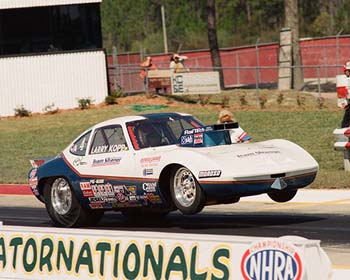 Completed in 1979, the Wayne County guys were ready to sic their new B/Gasser on the Modified world. It met with success, but only after some last-minute modifications.
Completed in 1979, the Wayne County guys were ready to sic their new B/Gasser on the Modified world. It met with success, but only after some last-minute modifications.
“The first time we tested, at Indy, it shut the E.T. clock off in the left lane and the miles per hour clock in the right,” Hutchens said. “The chute came out sideways and yanked the car sideways.”
“Then we took it to Gainesville (for the Gatornationals), and every time it shifted, you could read the letters on the side of the car. There was no weight distribution. We just had two small spoilers with a void between them; the thinking was that air had to get to the parachute and you didn’t want to block the air. Sid Waterman walked by and said the (funny cars) were running spoilers all the way across the back.”
“Well, aerodynamics was something we didn’t know much about,” Sullivan said. “I Rube Goldberg-ed up some pieces, and she went right down the track.”
“We picked up five miles an hour right away,” Hutchens said.
The little Opel was the terror of B/Gas that year, winning the NHRA Sportsnationals and the Division 3 Modified title while running three-tenths or more under its index. Sullivan said fellow B/Gasser Sam Gianino told him the Opel “obsoleted” the class with its regular 8.60s.
“We were so much lighter than anybody else,” Hutchens said. “When you take all the weight out, the 60-foot times are so much quicker, it’s not funny.”
However, the team stepped up a notch to A/Gas for 1980, running a 331-inch motor against the big blocks.
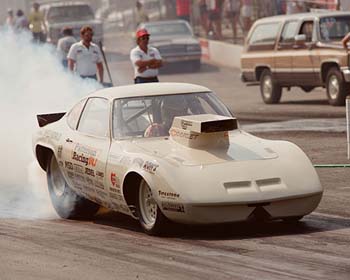 “The engine we ran in A/Gas was the same as in Pro Stock at the time, a long-stroke, small-bore engine,” Sullivan said. “We did it to get the torque you get from (running) an automatic.”
“The engine we ran in A/Gas was the same as in Pro Stock at the time, a long-stroke, small-bore engine,” Sullivan said. “We did it to get the torque you get from (running) an automatic.”
“There was enough data out there on how to build a Pro Stock motor, so we just did what they did,” Hutchens said of building the slightly bigger engine.
Again taking advantage of the small motor/light weight combo, the Wayne County team dominated Modified from summer onward in 1980, winning three NHRA national events and placing second in another.
Among the wins was the World Finals, where Hutchens ran as quickly as 8.29 on his 8.65 index and took the world championship in the last year those titles were decided by winning the Finals – the next year, sportsman classes began determining world champions by season-long points.
Following the 1980 season, Sullivan and Hutchens took their Pro Stock-style motor to Pro Stock, running a small-block Camaro and selling the Opel to Division 1 sportsman terror Larry Kopp, Modified world champ in 1976.
“Money-wise, if you were going to try to make anything at this, they obviously weren’t going to pay anything in Modified,” Sullivan said.
“As a racer, you’re always looking toward the future,” Hutchens said. “And Pro Stock was the next step.”
Although Sullivan and Hutchens were no longer the Opel’s owners as 1981 loomed, they continued to provide engines for it. With Wayne County supplying the power, Montgomery sponsoring the Opel and Kopp doing the rest, the little GT dominated Modified that year – even though it didn’t start the year in that eliminator.
Kopp opened the year in Competition, running the Opel in C/Altered, and took runner-up in the first two nationals, at Pomona and Gainesville. But by the Southern Nationals in Atlanta a couple of months later, the Opel was back in Modified as a C/Gasser – and back in the winner’s circle, as Kopp ran a string of 8.90s on the class’ 9.25 index.
Sullivan, Hutchens and Montgomery aren’t sure why Kopp first ran the car in Comp, or why he switched back to Modified after a reasonably good start, but all assume the reasons are index or weight-break related. Sullivan also noted NHRA raised the minimum-weight requirement somewhere about this time, negating some of the Opel’s advantage.
From Atlanta, the Opel went on a rampage, ending the year with five national event wins (including a second straight Summernationals and World Finals) and second at the U.S. Nationals, where Kopp consistently ran four-tenths under the index but bogged at the green light in the final against Cotton Perry. For good measure, Kopp ran an 8.68 – 0.57 under the index – at the Golden Gate Nationals In the fall.
The World Finals win also put Kopp in the history books as the last man to win an NHRA Modified race, as it was dropped at the end of 1981, with the classes merged into Competition or Super Stock and Super Gas becoming the newest NHRA eliminator.
So, it was back to Comp and C/Altered for Kopp and the Opel in 1982. The Winternationals again produced a runner-up finish, as did the ’83 Springnationals, but no more national event wins came until the 1983 World Finals, where it ran in the 8.60s on an index lowered to 9-flat for the Opel’s third World Finals win in four years.
Of course, Kopp’s talent was no secret to the drag racing community. In addition to his ’76 Modified world championship, he also won the 1998 NHRA Pro Stock Truck crown before losing his battle with cancer six years later. But Sullivan said Kopp had a secret weapon – a clutchless transmission, the one Jon Kaase and Don Nicholson developed for their Pro Stock Mustang in 1979.
“He bought it from Nicholson and brought it to me, and we re-did it,” Sullivan said. “I remember at the end of one season, the competition was bitching about the transmission, so (NHRA officials) came over. We split it open, laid it on the counter for them, and they said it was OK. Mercure, all of them were standing behind the trailer, screaming.”
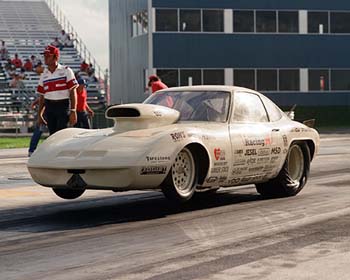 Kopp and Montgomery picked up support for 1984 from Bob Stange’s Strange Engineering, but the littlest member of the multi-car Team Strange failed to win any national events that season. For 1985, Kopp had Sullivan build him a small-block, lightweight Camaro altered to run in Competition. Naturally, he won first time out, at Pomona.
Kopp and Montgomery picked up support for 1984 from Bob Stange’s Strange Engineering, but the littlest member of the multi-car Team Strange failed to win any national events that season. For 1985, Kopp had Sullivan build him a small-block, lightweight Camaro altered to run in Competition. Naturally, he won first time out, at Pomona.
Montgomery bought the Opel from Kopp after Kopp received his new Camaro, and the car sat in Florida until Montgomery hooked it up with Patterson before the 1987 season. Montgomery already co-owned and sponsored the B/SR the Kansas-based Patterson drove to a Comp victory at the 1986 Mile-High Nationals – the same B/SR Wayne County ran immediately before the Opel came to be.
Patterson took the Opel, now in B/Econo Altered with a 304-inch motor and an automatic, to a Division 7 race in California before the 1987 Winternationals, where he discovered one reason the car was such a flyweight.
“To my knowledge, we were the first car ever booted in tech once NHRA implemented chassis regulations for Comp,” Patterson said with a chuckle. “It was the first time they did a chassis certification for the Comp guys. They had a sonic tester to check roll cage and bar thickness. The only bar to pass was the main hoop.”
“Allan (Paterson, Todd’s father) told me, ‘You sold me an illegal eagle,’” Montgomery said, also chuckling. “With that lightweight tubing, Sullivan was able to bend them more, make them fit better than with heavier tubing. The tubing was all integrated.”
This proved to be a problem in making the Opel legal again, because it wasn’t a case of simply removing each piece and replacing it. Fortunately for Patterson, chassis builder Frank Parks of Neil and Parks Racing Enterprises was at the same race and offered to take the car back to his shop.
Less than two weeks later, the Opel was back in Patterson’s care and at Pomona, where it won the Winternationals.
“Neil and Parks did an amazing job,” Montgomery said. “(The Winternationals win) was the highlight of my career.”
Patterson said he didn’t make many modifications to the Opel, other than using his Patterson racing engines and the auto transmission, which helped in more than just getting down the track.
“I was 6-foot-4. That car was built for (Hutchens), who’s probably 5-8,” Patterson said. “So I was all bound up in there. Having the auto helped - I didn’t have to move around so much.”
Patterson went on to win four of five Division 5 races and the division championship, but it was the only season he would run the Opel. A new Chevy Beretta from Don Ness was coming for 1988.
“The car was starting to age,” Patterson said. “The deal with cutting the chassis apart, I was worried it might stress the chassis out … (and) we took advantage of what we thought was a better index in C/Econo Altered.”
So Patterson and Montgomery sold the car. It eventually wound up in the hands of New Jersey Super Gas racer Marty Krohn for the 1988 season. Krohn was already familiar with the Opel GT, having run them under the “Pocket Rocket” moniker on the East Coast.
Krohn would go on to win Super Gas at the ’88 Springnationals with his Opel – but not the Wayne County one.
“I paid a lot of money for it, but it wasn’t the car I thought it was for Super Gas,” Krohn said from his body shop in Stewartsville, N.J. “And I was able to turn it over for a lot of money while it still had the Patterson ‘thing’ attached to it. I was able to get another car better equipped for Super Gas at half the price. It was just a business thing. I just never gave the car a real chance.”
Still, Krohn doesn’t appear to regret buying it.
“This was the ultimate Opel,” he said. “I wanted to get my hands on it.”
Unfortunately, the “ultimate Opel” seems to have vanished. Krohn said he sold it to a Florida buyer who planned to race it, but he heard through the grapevine the car was destroyed in a towing accident.
Whether it is really destroyed, or sitting in a garage somewhere awaiting restoration, the Wayne County Opel GT will always be one of the baddest, most innovative and winningest cars in NHRA sportsman history.
“It was a cat that gave tremendous enjoyment to drive, the most fun,” Hutchens said. “It was lightweight, way ahead of its time, so there was a tremendous sense of accomplishment for (Sullivan and him) - and it was fast.”



